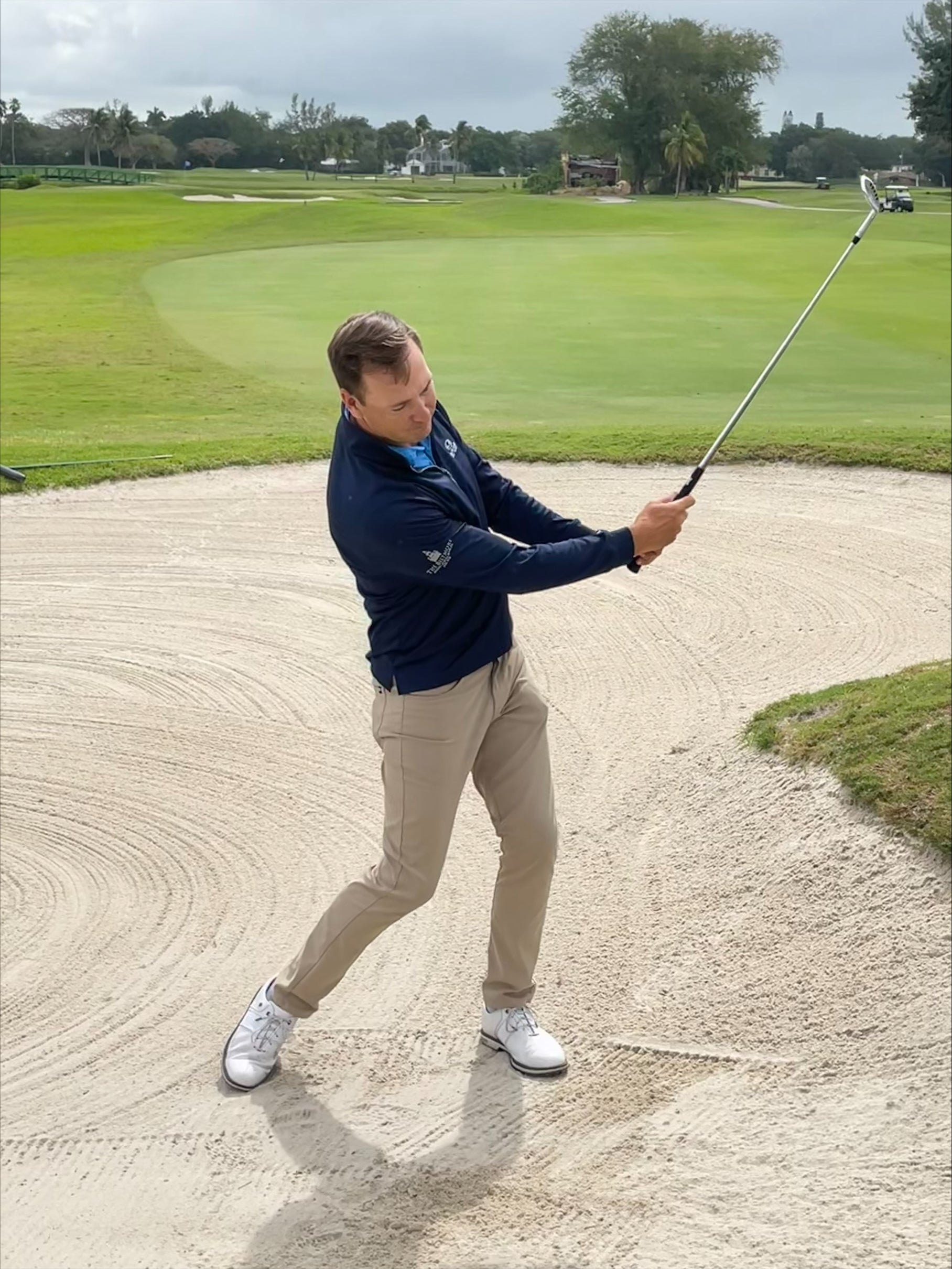Ask 100 amateur players what they fear most on the golf course, and a high percentage will probably say it’s hitting from a greenside bunker. Finding success from the sand requires a lot of factors.
It’s knowing which club to use (or that you trust the most). It’s understanding how to set up the right way. It’s having the ability to hit in front of the ball to, not only get your shot out, but to put it on the green.
Mastering the above techniques requires a lot of practice and patience; but, alas, it can be accomplished.
To help players better control their distance from a greenside bunker, Grayson Zacker — the director of instruction at Jim McLean Golf Schools — offers up some tips.
Zacker says that many of his students struggle hitting from greenside bunkers, but he reminds them that the shot doesn’t need to be as hard as they envision it.
“Depending on your skill level, the first goal is to learn how to get out of the sand and onto the green,” says Zacker. “You will want to perfect the standard bunker shot of about 10-20 yards since most greenside bunker shots fall into this category. Once you are reasonably proficient at that, you will want to learn how to hit it a little bit shorter or a little bit longer.”
To see Zacker’s tips on controlling your distance from a greenside bunker, scroll below.

1. Don’t be afraid to use different clubs
Zacker reminds players that just because you’re playing from the bunker, doesn’t mean you only need to use your sand wedge — and offers some alternative options.
“You can use a lob wedge for shorter bunker shots, and a gap wedge, pitching wedge, or even a 9-iron for long bunker shots. The loft of the club plays a major role in the height and distance of the shot, even in the sand.
“[If you do use a sand wedge], make sure you do everything the exact same as you do with your standard shot. If you open the face slightly with a 9-iron, take a three-quarter swing, hitting three inches behind the ball. You should expect a 30-50 yard bunker shot. However, if you do the same with a lob wedge, it will just go 5-10 yards.”

2. Don’t change the amount of sand you are taking
Zacker says that it’s risky when amateurs try to control the amount of sand they take during a shot.
“If you hit further behind the ball, it will go shorter. And closer to the ball will go farther — but it’s too risky and hard to control. Instead, I recommend striving for a consistent divot that is about half-deep and starts about three inches behind the ball.
“If you accidentally hit a little closer to the ball, it will fly a bit farther but will have more spin and stop. If you hit a little more behind it, it will come out shorter with less spin; and have more roll, traveling with a similar total distance.”

3. Practice at different speeds
Understanding your swing speed is a crucial part of seeing success from a greenside bunker. Zacker shares his method to help control his swing from the sand.
“I use a three-quarter speed swing for my standard bunker shot of 10-20 yards. The length of my backswing and follow-through is about three-quarter as well. For a longer shot, you can take a full swing at maybe 90 percent speed. For the short shot, you can swing slower, maybe 60 percent.
“It’s important that you still take a three-quarter backswing even for a short shot — because a short, low backswing doesn’t work in the sand.”

4. Think about how far you want the sand to go
Finally, Zacker reminds players to engage with the sand on their shot and not the ball. When the latter happens, it’s not only going to often produce a bad shot, but it won’t allow for any speed control.
“In the greenside bunker, the clubhead never makes contact with the golf ball. The club hits the sand, and there is a pillow of sand between the club and the ball, dampening the energy transfer. By thinking about how far the sand will go, you can tailor the speed of your swing to throw the sand at different distances — thus making your ball go shorter or farther.”










